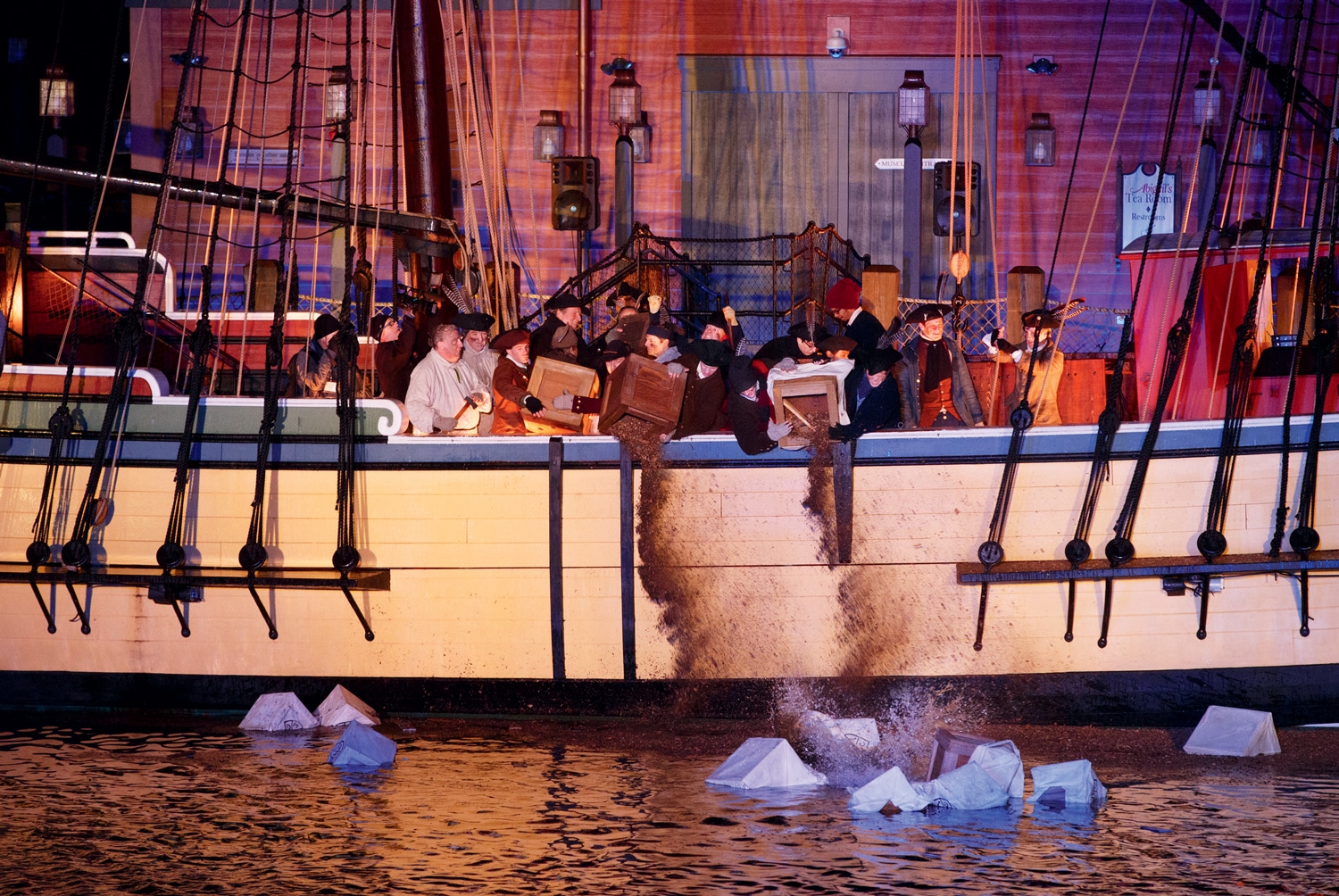Rebels with a Cause: The Boston Tea Party Ships & Museum
It’s been 250 years since Boston Harbor churned with angry colonists. But at this spirited museum, the tea party never ends.

Coffee By Design | Portland, Maine
Photo Credit : Katherine KeenanThe unruly mob boos and stamps its feet as Sam Adams ticks through a list of recent British outrages. His long curls jump as he pounds the lectern with every point. When he reaches the tax on glass, he calls James Brewer from the crowd to tell how he managed to pay to replace his home’s windows.
A girl, no more than 8 years old, rises and shouts, “I did not pay! I was forced to choose between new windows and putting food in my family’s mouth!” The crowd erupts. “Outrageous,” Adams cries. Then, smiling at the girl, he adds, “especially for a father as young as yourself!”
When the Boston Tea Party Ships & Museum opened in 2012, Evan O’Brien, the museum’s creative director, set out to build a historical experience like no other. After 11 years of refinement, the tour is now a tight one-hour whirlwind of historical artifacts, multimedia exhibits, and live-action performance that mixes solid history with Barnumesque flair. Getting visitors into the action is key to O’Brien’s philosophy. “They want to play and get involved,” he says. “And through that play, they retain that information more and have a great deal of fun while they’re learning.”
At the meetinghouse, that play includes being coached in the proper ways to hiss, boo, and huzzah. A witness to the real-life meeting that preceded the Tea Party in 1773 described the ruckus there as sounding “like the Beast from the infernal regions had broken loose.” With every tour, the museum’s guides try to reach that bar. When Sam Adams announces the tea in the ships would be unloaded, they whip the tour group into a fury of foot stamping and shouts of “Fie! Fie!” Then the doors are thrown open and they march the mob toward the docks to do what must be done.

Photo Credit : Caroline Talbot/Boston Tea Party Ships & Museum
It’s been 250 years since December 16, 1773, the date of the real Boston Tea Party. This year, the museum is working with two dozen other organizations to stage events across the state, culminating in a full reenactment in Boston Harbor. O’Brien’s goal is for everyone to see themselves represented in the history. “The story of the Boston Tea Party belongs to the greater country and to the rest of the world,” he says.
The wide mix of ages and accents on our tour suggests O’Brien may be onto something. In our small group are representatives from every corner of the U.S. and several foreign countries, each drawn here to walk in the footsteps of unruly Boston patriots. One by one they climb aboard a re-created merchant vessel docked at the museum. The group gathers around a row of tea chests. Three children are selected to do the honors. They raise the boxes above their heads, and with a mighty huzzah send them tumbling overboard.
While the Boston Tea Party was sparked by a disagreement over tea imports, the event was about so much more. The colonies were growing larger and more prosperous. Their people were increasingly native-born and democratic. Why then were they ruled by a king that seemed more distant than a mere ocean away?
On the side of the museum is a sign listing all known participants of the Tea Party. Few would recognize any of the names. No future presidents or famous generals were there that night. These were normal folk. Perhaps that’s what makes the story so easy to see yourself in. Who hasn’t seen their share of injustice? Who hasn’t ever wanted to rebel?
An interpreter in a long dress hoists the chests back up by the ropes tethering them to the railing and encourages visitors to take a turn. Like tossing coins into a wishing well, each visitor hurls the chests in their own personal act of treason. The box is cold and damp from its many previous journeys into the harbor. The weight is satisfying. Raising it high, we’re all invited to take matters into our own hands, then send them crashing into the waves. Huzzah, indeed.







